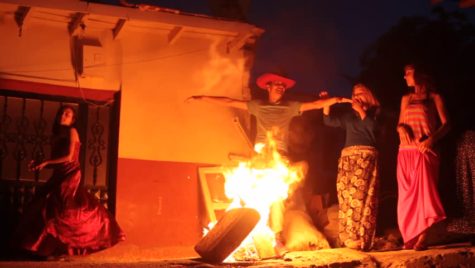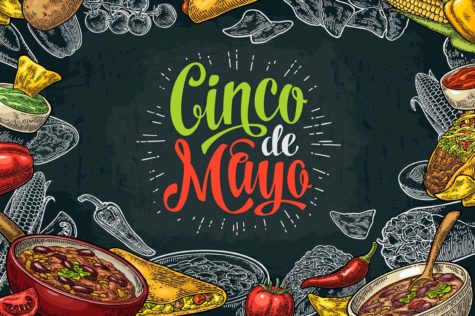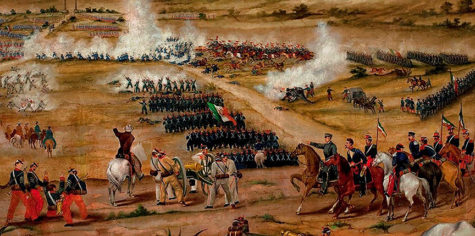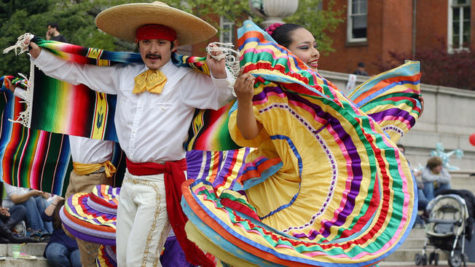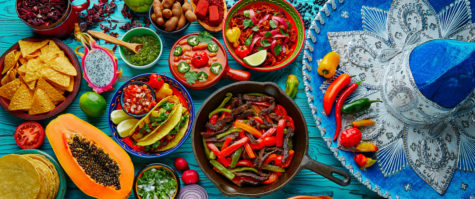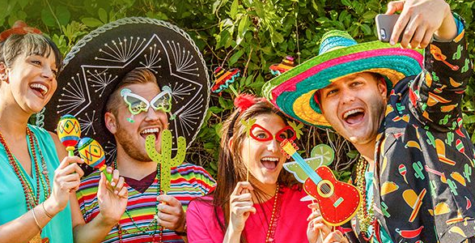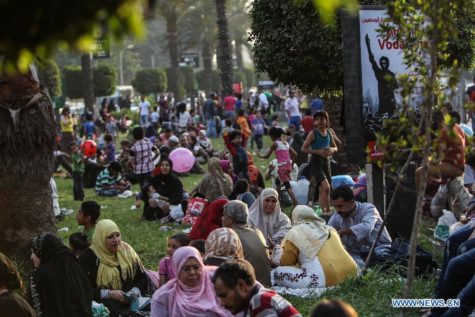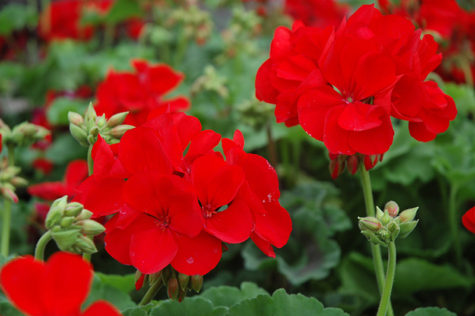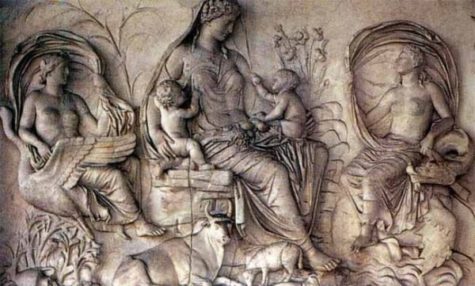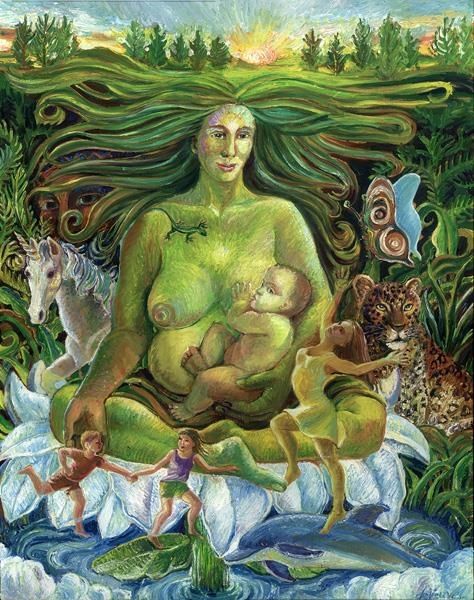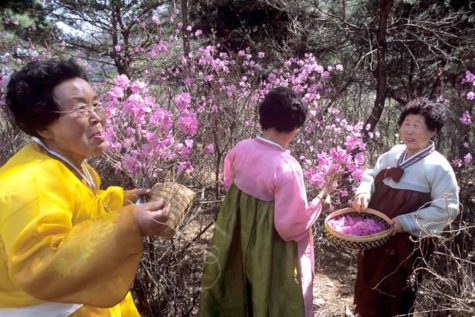In Bulgaria and Turkey, the Kakava Festival is celebrated every year on the evening of May 5th and and continues in the dawn of the next day. the morning of May 6th.
The event represents the rebirth of green and the purification of one’s self. The Roma emphasize the dates strongly, as May 6th is celebrated as the Hidrellez Festival. During the Kakava Festival, fires are lit on the eve of May 5th and celebrations are made during the whole night. After lighting the fire and jumping over it, music playing and dancing is performed.
Edirne, Turkey, home to a large Roma community, experiences large celebrations with people from all over the country as well as foreign tourists descending into the city for Kakava, a gathering of the community, for Hıdrellez.
After setting a bonfire in Sarayiçi, a historical district of Edirne, the crowd spends the night dancing. The official part ends after the distribution of rice dish pilaf to the around 5,000 attendees. The celebration continues in the dawn of the next day at the bank of Tunca River. As the sun rises, streams of revelers flock to the river where they wash their faces in the river “for prosperity and health.” They then leave candles on the river after making wishes and tying ribbons to a wish tree. Hundreds also wash their possessions, from clothes to shoes, in the river in the hope that the water from the river will bring good fortune to them.
Collected from various sources
The holiday of Cinco De Mayo, “The Fifth of May”, celebrates the victory of the Mexicans over the French army in 1862.
Shortly before the battle on May 5th Benito Juarez announced to his people:
The government of the republic will fulfill its duty to defend its independence, to repel foreign aggression, and accept the struggle to which it has been provoked, counting on the unanimous spirit of the Mexicans and on the fact that sooner or later the cause of rights and justice will triumph.
At the same time General Lorencz stated to the French government:
We are so superior to the Mexicans in race, in organization, in discipline, in morality, and in refinement of sensibilities, that as of this moment, at the head of our 6,000 valiant soldiers, I am the master of Mexico.
The battle lasted from daybreak to early evening, and when the French finally retreated they had lost nearly 500 soldiers. Fewer than 100 Mexicans had been killed in the clash.
And so it was that on May 5th the outnumbered, untrained, and ill-equipped Mexican people defeated the formidable French army. The success was unimaginable and was won with the determination and spirit of the Mexican people. However, victory was short lived and within a year France had successfully conquered Puebla and the rest of Mexico. They ruled there until 1867.
Cinco de Mayo celebrates the courage of the Mexican people during the battle on May 5th. It is often confused with the Mexican Independence Day, which occurred September 16, 1810 about 50 years earlier. A relatively minor holiday in Mexico, in the United States Cinco de Mayo has evolved into a commemoration of Mexican culture and heritage, particularly in areas with large Mexican-American populations.
Nifty Cinco de Mayo Party Ideas
- Send a Themed Invite –
Let everyone know right off the bat that this is a fun, festive fiesta by making sure your invitation reflects your theme. You might even want to send an online sign up to make it a potluck so people can share their favorite dishes.
- Create a Sombrero Centerpiece –
Set a sombrero on top of a tall vase or glass to give it height and fill the rim of the hat with fun, colorful treats.
- Spice It Up –
Fill the table with clear vases and margarita glasses that are filled with brightly colored yellow, red and green peppers.
- Get Colorful Silverware and Paper Products –
Think red cups, green forks and knives and white napkins — then you’ve got the colors of the Mexican flag covered!
- Reuse Containers –
Another alternative for an easy centerpiece is to buy canned Mexican food such as beans (put the food in an alternative container or cook it as part of your feast) and fill the cans with big, bright blooms.
- Make a Traditional Mexican Banner –
Papel picado (perforated paper) is a traditional Mexican folk art. It’s a decorative craft that involves cutting out intricate patterns on colorful tissue paper. Fold the tissue paper horizontally, then fold it over again. Use scissors to cut shapes in the paper. (It’s kind of like cutting paper snowflakes.) Once you have cut enough little patterns, unfold the paper.
- Red, White and … Green –
We’re all used to dressing in red, white and blue to celebrate July 4, why not get co-workers or party goers to dress in red, white and green for May 5? (The colors of the Mexican flag.)
- Create a Playlist of Mexican-themed Music –
You can go classic with authentic Mexican music or cue up some favorite Mexican-American artists like Carlos Santana and Selena.
- Hire a Mariachi Band –
Nothing gets people more in the mood to celebrate Mexican heritage than an actual, live Mariachi band. Everybody loves the serenade at the local Mexican dive restaurant, so if you really want to impress your guests, have a band come play in person.
Recipes and Food for Cinco de Mayo
- Flag Food –
Make a festive spread of your dips using salsa (red), queso blanco (white) and guacamole (green).
- Cinco de Mayo Fruit Cup –
With a squeeze of lime juice and a dusting of chili powder, slices of papaya, cantaloupe, mango, watermelon and pineapple take on a new depth of flavor perfect for this caliente holiday.
- Build Your Own Taco Bar –
Grab hard and soft shells and loads of toppings — think shredded cheese, meats, grilled veggies, Mexican rice, lettuce and more, and have guests build their own tacos. You could also do this with nachos.
- Cinco de Mayo Strawberries –
Easy and eye-catching, the kids can help you turn strawberries into the Mexican flag. Dip the red treats into melted white candy and top with green sprinkles. Enjoy!
- Piled High Nachos –
Grab your favorite bag of tortilla chips and spread evenly over a baking sheet. Add a mix of cheddar, Colby and Monterey Jack cheeses (shredded). Now add toppings of your choice. (That can mean ground beef, pork or chicken, black olives, tomatoes, corn, etc.) Bake at 400 degrees for five to 10 minutes (until warm). Then serve with sour cream, salsa or guacamole.
- DIY Pico De Gallo –
Take four chopped medium tomatoes, ¼ cup diced white onion, two seeded and minced jalapeno peppers, two tablespoons chopped green bell pepper, one clove minced garlic, ¼ cup chopped cilantro leaves, two tablespoons of fresh lime juice, a dash of salt and pepper and mix it all together. Refrigerate for an hour before serving.
- Mexican Rice Mashup –
This easy recipe will serve everyone at your party. Brown one pound of ground beef and combine with taco seasoning. Then in a cast iron skillet, sauté ½ tablespoon olive oil and ¼ cup of white onion diced. Add in four cups cooked rice, one cup black beans, one cup of corn, one cup of red peppers, one cup of green peppers, one diced tomato, and ½ cup of cilantro and mix with the ground beef. Then squeeze the juice from ½ of a lime over the dish.
- Watermelon Jicama Salad –
Slice half a watermelon into bite-size chunks. Combine that with one to two cups diced jicama, one mango (peeled and diced), one small bunch of chopped cilantro leaves, the juice of two limes, one teaspoon of salt, ¼ to ½ teaspoon black pepper and mix all the ingredients in a large serving bowl. Cover and refrigerate. Serve cold.
- Cheesy Enchilada Bake –
Brown one pound of ground turkey or beef and sauté with 1/3 cup of chopped white onions. Add a 15-ounce can of enchilada sauce. Separate the dough of a 16-ounce can of refrigerated biscuits into chunks and add to the meat. Put the mixture into a baking dish and top with 1½ cups of cheese. Bake at 350 degrees for 30 minutes. Garnish with green onions.
- Easy Quesadillas –
Place one large flour tortilla in a skillet with a little bit of oil, when it begins to brown add grated cheese (cheddar or Monterey Jack) and other ingredients. (You can add mushrooms, green onions, fresh tomatoes, avocado, lettuce and more.) Fold the tortilla in half, cook a little bit longer (until completely browned) and serve.
- Hot, Hot Mexican Zucchini –
Spray a large skillet with cooking spray, bring to medium heat. Add one garlic minced clove and heat until it sizzles. Add one pound of diced zucchini and cook until tender (about three minutes). Add one large diced tomato and one sliced green onion and cook for three more minutes. Remove skillet from heat, add one tablespoon fresh minced cilantro, jalapeno and fresh lime juice. Top with ½ cup feta cheese crumbles.
- Corn Salad –
Mix two 16-ounce frozen bags sweet corn (thawed), two large tomatoes (chopped), one Vidalia onion (chopped), ½ cup fresh cilantro (chopped), ¼ cup extra virgin olive oil, the juice of one lime, one 14-ounce can black beans (drained and rinsed) and a dash of salt and pepper. Once mixed well, let it stand and serve at room temperature.
- Mango and Avocado Salsa –
Combine one mango and one avocado (peeled, pitted and diced), four medium tomatoes, one jalapeno pepper (seeded and diced), ½ cup chopped fresh cilantro, three cloves minced garlic, one teaspoon salt, two tablespoons fresh lime juice, ¼ cup red onion (chopped) and three tablespoons olive oil in a medium bowl and stir well. Refrigerate before serving with chips.
- Easy Guacamole –
In a medium bowl mash together three avocadoes, the juice of one lime, and one teaspoon of salt. Mix in ½ cup of a diced onion, three tablespoons chopped fresh cilantro, two tomatoes and one teaspoon of minced garlic. Stir in cayenne pepper. Refrigerate for one hour or serve immediately with chips.
- Mexican Wedding Cookies –
Preheat oven to 350 degrees. Beat one cup butter (softened), ½ cup powdered sugar and one teaspoon vanilla. Then add two cups flour and one cup chopped pecans. Bake 14 to 15 minutes or until bottoms are lightly browned. Cool five minutes on baking sheets. Roll warm cookies, one at a time, in ½ cup powdered sugar in small bowl until evenly coated.
- Mexican Pineapple Water –
Also known as Agua de Piña, this drink is simple to make. Cut one skinned and cored pineapple into chunks and combine in a blender with two cups of water. Once blended, add two more cups of water and run through a mesh sieve. Add more water and one to two cups of sugar until you reach your desired sweetness and consistency.
- Watermelon Lemonade –
This drink is easy and fun and should fit easily with your party vibe. Mix two cups of watermelon juice (from an actual watermelon) with four cups of lemonade.
- Frozen Watermelon Lemonade –
Create with or without alcohol. Once you have your two juices mixed, pour the half of each juice into ice cube trays and freeze. Take frozen cubes and simply mix with liquids in a blender.
- Strawberry Margarita Punch –
Mix 15 ounces of frozen strawberries, 24 ounces of lemon lime soda and 12 ounces of frozen limeade in a blender, then pour in two cups of orange juice and stir. This cocktail is super refreshing, delicious and literally made in minutes. You can make this with or without tequila.
- Candy Buffet –
Send guests home with a colorful sweet treat in the flag colors. Use Twizzlers or red hots, white chocolate Hershey kisses, green licorice and red and green M&Ms. Set out small bags to scoop the candy into and take home with them.
- Hire a Mexican-themed Food Truck –
Leave the cooking to someone else while your guests enjoy the fun of the food truck!
Games and Activities for Cinco de Mayo
- Scavenger Hunt –
Have guests search for items like a small bag of tortilla chips, a bottle of hot sauce, a sombrero, a mini Mexican flag and more. Make sure the winner gets a fun prize. (Maybe everything they just found!)
- How Hot Is It? –
Arrange chili peppers (or sauces) with different heat levels on a table. Keep track of how hot everything is. Have a few brave souls try them and the rest of the crowd guess how hot they are based on the reactions.
- DIY Piñata –
Use a decorative shopping bag and fill it with candy (and some crinkled up newspaper to fill some space), then tape or staple the shopping bag closed and hang it just high enough so that it’s hard to hit. Blindfold your guests and watch them take a whack at your colorful creation! This works for kids and adults. You can get creative with how you fill the piñata if it’s for kids.
- Pass the Sombrero –
Much like musical chairs, guests pass the hat and when the music stops, the person holding the hat is out. Make things more entertaining by giving contestants the option to do a Mexican hat dance for a chance to get back in the game.
- Mustache Selfie Contest –
Buy packs of different kinds of stick-on mustaches and have guests take fun selfies wearing them. Then decide as a group who took the best photo.
- Nacho Eating Contest –
Blindfold contestants and offer them chips-and-messy-dip and see who can finish the bowl first.
- DIY Maracas –
Get two mini paper cups. Paint and decorate the outside of each one. Then fill one cup halfway with dried pinto beans. Apply hot glue to the top edge of the cup and place the second cup on the glue to create the maraca. Then shake!
- Giant Tissue Paper Flowers Craft –
Cut out circles or squares of different colored tissue paper. Give guests two to three pieces and place them on top of each other. Carefully pinch the layers in the center and secure with a twist tie. Then open out the different layers to reveal a multicolored flower.
- Terra Cotta Pot Decoration –
Have guests use acrylic paint to decorate terra cotta pots with popular Mexican-themed symbols like the flag, the sun, a cactus, sombreros and more.
- Traditional Dancing –
Get your guests shaking more than just their maracas! Bring in a trained professional to teach the group how to samba, salsa, rumba and more.
- Sing It –
If your guests are into performing, rent a karaoke machine and use your playlist as the song choices for some good old-fashioned living room karaoke.
Kid Stuff For Cinco de Mayo
- Make Your Own Poncho –
Lay a paper grocery bag flat on the table. Cut around the outside of it, snipping off the folds. Cut the neck hole by layering the two sections together. Test it on your child’s head to make sure it’s big enough. Staple the area where the two bags meet at the shoulder. Then decorate with bright colored crayons or markers.
- Play the Mexican Lottery (Bingo) –
The Lotería game set includes a deck of 54 cards with colorful images and 10 boards, with a random pattern of 16 images. It’s very similar to American bingo and you can find a Lotería set online.
- Play Ball –
Kickball is a traditional game played in Mexican villages (though it’s a bit different than American kickball) and is great for an outdoor party. Divide partygoers into two teams. The aim of the game is for each team member to kick a ball around an obstacle course and the first team where every member completes the course wins. You can use cones, chairs — anything — to create the obstacle course.
- Mexican Train Domino Game –
Play a game of dominoes where the object is to create a “train” (chain) using all the dominoes in your hand. (You can use a traditional set of dominoes for this version of the game but you will also need to make a “hub” with slots for each players train. You can cut this out of cardboard or buy a fancier set online.
- Speak the Language –
You and your guests can learn some key Spanish phrases from an español-speaking friend to appreciate the culture behind the holiday. (Hola!)
- Make a Word Search –
Use the phrases you just learned to create a custom word search for the kids at your party.
- Play Marbles –
Marbles are still hugely popular in Mexico. Get a variety of marbles in different sizes and colors and let kids play this classic game.
- Pin the Tail on the Donkey –
We’ve all played this game — as kids and adults! Considering the donkey is considered a beloved “hero” in Mexico, it seems like a good day to dig out the classic.
- Play Soccer (Fútbol) –
This popular Mexican sport will help kids burn off some energy. Set up two cones (to form a “goal”) on either side of your backyard and host a friendly game of fútbol. Go the extra mile and have T-shirts made to distinguish the teams.
Sources:
Sham el-Nisim is an Egyptian national holiday marking the beginning of spring. It always falls on Easter Monday, the day after the Eastern Christian Easter (following the custom of the largest Christian denomination in the country, the Coptic Orthodox Church).
Despite the Christian-related date, the holiday is celebrated by Egyptians of all religions, so it is considered a national festival, rather than a religious one. The main features of the festival are:
- People spend all day out picnicking in any space of green, public gardens, on the Nile, or at the zoo.
Traditional food eaten on this day consists mainly of fesikh (a fermented, salted and dried grey mullet), lettuce, scallions or green onions, tirmis, and colored boiled eggs.
The name of the holiday is derived from the Egyptian name of the Harvest Season, known as Shemu, which means a day of creation. According to annals written by Plutarch during the 1st century AD, the Ancient Egyptians used to offer salted fish, lettuce, and onions to their deities on this day.
After the Christianization of Egypt, the festival became associated with the other Christian spring festival, Easter. Over time, Shemu morphed into its current form and its current date, and by the time of the Islamic conquest of Egypt, the holiday was settled on Easter Monday. The Islamic calendar being lunar and thus unfixed relative to the solar year, the date of Sham el-Nessim remained on the Christian-linked date.
As Egypt became Arabized, the term Shemu found a rough phono-semantic match in Sham el-Nessim, or “Smelling/Taking In of the Zephyrs,” which fairly accurately represents the way in which Egyptians celebrate the holiday.
In his book, Manners and Customs of the Modern Egyptians, Edward William Lane wrote in 1834:
A custom termed ‘Shemm en-Nessem’ (or the Smelling of the Zephyr) is observed on the first day of the Khamaseen. Early in the morning of this day, many persons, especially women, break an onion, and smell it; and in the course of the forenoon many of the citizens of Cairo ride or walk a little way into the country, or go in boats, generally northward, to take the air, or, as they term it, smell the air, which on that day they believe to have a wonderfully beneficial effect. The greater number dine in the country or on the river. This year they were treated with a violent hot wind, accompanied by clouds of dust, instead of the neseem; but considerable numbers, notwithstanding, went out to ‘smell’ it.
I was unable to find any information on the dates of Geranium day for 2017, and it’s possible that this day is no longer celebrated. The two collection dates for 2016 were Friday 22 April and Friday 20 May 2016.
The English sell geraniums today to collect funds for charities, specifically those that support services for the blind. Since the 1920’s this has been a day in England to collect money for the blind. It represents a joint effort by a number of charities dedicated to helping the blind and is organized by the Greater London Fund for the Blind.
Although at one time real geraniums were given to those who made donations, these days contributors receive a sticker with a red geranium on it. And there are now two collection days—one in the City of London in April and one in the greater London area in May.
The choice of the geranium—a flower without a strong scent—seems unusual as a symbol for the blind, but it may have been chosen simply because the poppy ( see Memorial Day) and the rose ( see Alexandra Rose Day) were already being used for fund-raising purposes. It may also have been chosen for its symbolic meaning.
In the language of flowers, geraniums represent solace – which is what any act of charity stimulates today. It provides hope to those in need. Even if your pocket is empty, extend assistance to someone or something in need. Offer to help an elderly friend with chores, give some returnable bottles to a homeless person, act as a big brother or sister to orphans, give water to a stray cat. Benevolence has many forms, and it makes the world a much nicer place in which to live.
Source: The Free Dictionary
The Eta Aquarids is an above average shower, capable of producing up to 60 meteors per hour at its peak. Most of the activity is seen in the Southern Hemisphere. In the Northern Hemisphere, the rate can reach about 30 meteors per hour. It is produced by dust particles left behind by comet Halley, which has known and observed since ancient times. The shower runs annually from April 19 to May 28. Best viewing will be from a dark location after midnight. Meteors will radiate from the constellation Aquarius, but can appear anywhere in the sky.
Source: SeaSky
The Lyrids is an average shower, usually producing about 20 meteors per hour at its peak. It is produced by dust particles left behind by comet C/1861 G1 Thatcher, which was discovered in 1861. The shower runs annually from April 16-25. These meteors can sometimes produce bright dust trails that last for several seconds. Best viewing will be from a dark location after midnight. Meteors will radiate from the constellation Lyra, but can appear anywhere in the sky.
Source: SeaSky
On April 15th, every year, the Ancient Romans held the festival of Fordicia, also called Hordicidia. This festival was in honor of Tellus, or Terra Mater, the Roman personification of the earth.
Terra Mater or Tellus Mater was a goddess personifying the Earth in Roman mythology, with both names meaning “Mother Earth” (a common metaphorical expression for the Earth and its biosphere as the giver and sustainer of life) in Latin. She was associated with Ceres in respect to growing crops, was responsible for the productivity of farmland, and was also associated with marriage, motherhood, pregnant women, and pregnant animals. Her Greek counterpart is Gaia.
During the festivities, a pregnant cow was sacrificed, the calf fetus burned and the ashes saved for the Parilia festival (an agricultural festival performed annually on April 21). The whole event was governed by the Vestal Virgins and the Pontifex Maximus.
The purpose of the sacrifice was to assure the fertility of the planted grain already growing in the womb of Mother Earth in the guise of Tellus, to whom the sacrifice was offered. As with certain other rituals over which the Vestals presided, the unborn calf is a liminal or mediating being: not yet born, but living; not a full-fledged victim, but sacrificed. The role of the Vestals emphasizes their importance in linking through the ritual reuse of elements the Earth’s fertility, the health and safety of the flocks, and the security of the city, including and especially its military security against invasion.
A similar spring festival in China was witnessed in 1804 by the British ambassador to China, John Barrow. At the temple of Earth, a large porcelain cow was carried in procession then shattered to reveal several small cow-images inside. These were distributed among the people as tokens of a good growing season. Fowler speculated that the Chinese rite was in origin an animal sacrifice similar to that of the Fordicidia.
A Ritual For Tellus Mater
- Color: Green
- Element: Earth
- Offering: Go outside the community and find land to clean up.
- Daily Meal: Vegetarian
Altar: Upon a green cloth place several large stones of different sorts, some in a clay bowl of water; a clay bowl of salt, a loaf of thick, nourishing black bread with herbs and vegetable gratings in it, a chalice of herbal tea, boughs of greenery, and four green candles.
Invocation to Tellus Mater
Our Mother lies beneath our feet
And holds up our every step.
There is nowhere that we can walk
Where She does not lie beneath us.
There is nothing that we can eat
That will nourish our bodies,
Those bodies that are made from Her clay,
That does not come from Her
And Her other children.
We are born of Her
As we are born of woman,
Each and every one of us.
No matter who we are,
No matter where we walk,
No matter what we think,
We are still Her children.
Hail, Mother of All Things!
Hail, bounteous one, giver of life,
And taker of life back into your breast.
From you we all proceed
And to you we shall all return.
Chant:
The Earth is our mother, we must take care of her,
The Earth is our mother, we must take care of her,
Hey and a ho and a ho na na
Hey and a ho and a ho na na
(All join hands while chanting and move in a spiral dance around the room, four times in and out. Then the bread and tea is passed around. It is important that much work be done on the Earth today, both in and out of the community’s land.)
Sources:
Samjinnal is a Korean holiday that falls on March 3 of the lunar calendar. Three being a positive number in numerology, this date containing two threes was considered to be highly auspicious. This festive day announces the arrival of spring. By this time, spring is usually in full bloom – the weather is warm, the young grass is a lively green, and the first flowers are blooming.
Note: Because this holiday is based on the lunar calendar, on Gregorian Calendars the date will vary from year to year. In 2016, this holiday was celebrated on April 9th, in 2017, this holiday falls on March 30.
It is known as the day the swallows came back from Gangnam and the day the snake came out from its winter sleep. It is also the day birds and butterflies start to appear.
Koreans believed that swallows left for their southward journey on ninth day of the ninth lunar month and returned back on Samjinnal. They started to repair their old nests under the eaves or built the new ones to hatch their young.
Many seasonal activities associated with spring took place on this day. Villagers headed out on a blossom tour of the nearby mountains as the gardens were increasingly frequented by butterflies, fresh-green buds became visible on tree branches and the hills and prairies put on their colorful spring dresses.
Popular picnic foods included flower petal pancakes and other seasonal delights. Banquets were also held around this time of year to treat senior members of the community to special meals. For the noblemen across the country, Samjinnal was a day of archery contests.
Flower petal pancakes for the blossom picnic were made with glutinous rice batter, formed in circles, fried in a pan with sesame oil and topped with azalea petals. A special dessert known as hwamyeon was prepared by putting slices of mung-bean dough cakes into omija (favor flavor berries)-scented water, and flavoring it with honey and pine nuts. When preparing the mung bean dough for this dessert, housewives sometimes added azalea petals to it. If they made the dough with honey and dyed it red, the dish would be called sumyeon.
Sumyeon was considered a ritualistic dish as it was frequently used for memorial services.One of the beliefs associated with Samjinnal is that seeing a white butterfly on that day was an ominous sign since white signifies mourning. The sighting of a white butterfly could result in a family member dying during the course of the year.
Tiger or yellow butterflies on the other hand were considered an excellent sign, and portended a lucky year. Women made sure they washed their hair on Samjinnal as they believed it would make their hair vigorous and beautiful throughout the year. Snakes that came out of their hibernation around that time were avoided at all costs since seeing these slithering creatures was regarded as unlucky.
Other names for this holiday:
It was called samjil (삼질) in oldKorean language and referred to as sangsa (상사, 上巳), wonsa (원사, 元巳), sungsam(중삼, 重三), sangje (상제, 上除) or dapcheongjeol (답청절, 踏靑節) in hanja. Samjinnal implies the overlapping of Sam (three). According to Choi Namseon, samjil was derived from the consonants of Samil, and Sangsa is defined as the first snake day of the 3rd lunar month.
Source: Wikipedia and Encyclopedia of Korean Folk Culture
A popular snack all over China, glutinous rice balls (tang yuan) are filled with red bean, sesame, peanut, and other sweet fillings that ooze out from mochi-like dumplings skins. The dumpling skins owe their pleasantly gummy texture to glutinous rice flour, which produces a chewier dough.
You’ll find packets of frozen tang yuan at most Chinese supermarkets, and these days the fillings not only come in the standard assortment, but have branched out into fancy-sounding ones like “sweet osmanthanus” and “chestnut and sesame seed.”
The dough for tang yuan is a simple combination of glutinous rice flour, regular rice flour, and water. Once you get the hang of enclosing the dough around nuggets of sweet filling, you’ll find that making your own tang yuan takes no more than half an hour.
The best part about making your own is that you can experiment with all kinds of nuts and pastes. The filling is a simple combination of sugar, lard, and a filling of nuts and/or beans. Instead of ground peanut or sesame, you can use almonds, cashews, and pecans. (To prepare the nuts: roast them, chop them up, and grind them in a mortar and pestle before mixing with lard and sugar.)
Or, if you’ve always found the red bean filling in supermarket tang yuan to be bland, you can make your own from dried adzuki beans. Coconut flakes are a great addition to fillings of any kind.
You can even vary the fat, substituting coconut oil for the traditional lard. I like to use the lard that I confit with for a filling that’s extra meaty and mildly savory. You could also play around with smoky bacon fat.
Really, you can’t go wrong with the filling. Who would turn down chewy rice balls that release a lava-like concoction that’s sweet, nutty, and porky? Even the water in which tang yuan simmers is surprisingly soothing and tasty to sip between rice ball bites. Make the balls in large batches and freeze them for a quick breakfast or dessert.
March 29 thru 31, the last three days of March, have a reputation for being stormy. Scottish folklore proposes that these three days were borrowed from April so that March might extend his power.
The Spanish story about the borrowing days is that a shepherd promised March a lamb if he would temper the winds to suit the shepherd’s flocks. But after his request was granted, the shepherd refused to deliver the payment. In revenge, March borrowed three days from April, in which fiercer winds than ever blew to punish the deceiver.
March borrowit from April
Three days, and they were ill:
The first was frost,
the second was snaw,
The third was cauld as ever’t could blaw.
~ Scottish proverb
From Almanac.com
